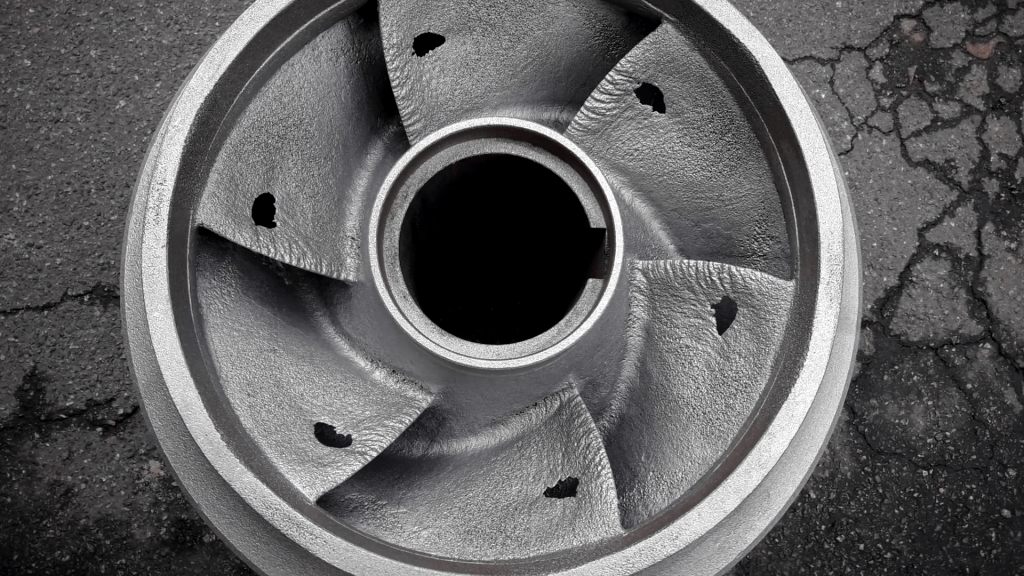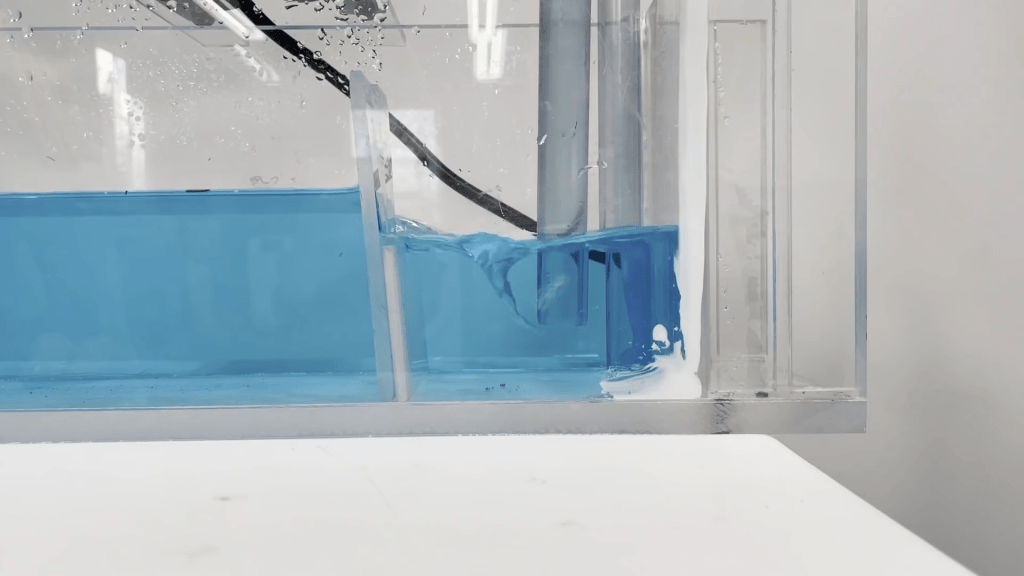In the mid-eighteenth century, pewterer Andreas Wirtz invented a spiral pump. Even today, his design is useful for small-scale, low-power pumping, as seen in this Steve Mould video. The design relies on a series of air and water plugs to build up pressure that’s then used to lift the fluids higher. In the video, Mould visits a stream-powered, home version of a Wirtz pump that regularly delivers water over eight meters in elevation. See it in action in the full video! (Video and image credit: S. Mould)
Tag: pump

Pumping Waste
Sewage systems rely on gravity to remove waste from our homes and carry it toward treatment plants. But that constant downward slope can’t always be maintained. Sometimes we have to bring the sewage back up to the surface to process it. For that, modern systems rely on pumps and other equipment to move the challenging slurry of liquid and solid materials. In this video, Grady from Practical Engineering breaks down the physics and engineering of sewage pumping. (Image and video credit: Practical Engineering)

Pump Problems
Pumps are a critical piece of infrastructure, but to keep them operating, engineers have to account for several potential pitfalls. In this Practical Engineering video, Grady discusses some of the common fluid dynamical effects that can destroy a pump and its performance. As you’ll see in the video, a lot of the challenges boil down to keeping air out of the pump. Since air and water are vastly different in their density and compressibility, most pumps cannot handle both of them at the same time. Pumps need to be primed to displace any air inside them and allow them to develop the suction needed to pump water. On the other hand, too much suction can create cavitation, which damages pump parts. And, finally, the intake systems for pumps have to be designed to keep air from getting sucked in. If nothing else, having too much air in the lines reduces the pump’s efficiency. (Image and video credit: Practical Engineering)

Hummingbird Drinking

Hummingbirds are master acrobats, able to hover and drink simultaneously before flitting off to the next flower. At first glance, you might expect that their tongues are simply tiny straws that use surface tension and capillary action to draw up nectar. But it turns out that process is just too slow for the fast-paced birds.
Instead, hummingbirds use a forked tongue with a long groove on either half. When the hummingbird extends its tongue, its beak compresses the grooves and squeezes them together. Once the tongue reaches nectar, the grooves expand, which draws nectar up along the full length of the tongue grooves. This allows the bird to fill its tongue much faster than it could otherwise, enabling the hummingbird to lick up nectar more than 10 times a second.
There’s a neat excerpt from a documentary including this research over here (Tumblr won’t allow the embedded version); the full documentary premieres today on PBS. (Image credits: A. Rico-Guevara et al., sources 1,2; submitted by mypronounsareherrchancellor)

Egg-Spinning Fun
If you have any leftover hard-boiled eggs, you can recreate this bit of fluid dynamical fun. Spin the egg through a puddle of milk, and you’ll find that the egg draws liquid up from the puddle and flights it out in a series of jets. As the egg spins, it drags the milk it touches with it. Points closer to the egg’s equator have a higher velocity because they travel a larger distance with each rotation. This variation in velocities creates a favorable pressure gradient that draws milk up the sides of the egg as it spins, creating a simple pump. To see the effect in action check out this Science Friday video or the BYU Splash Lab’s Easter-themed video. (Photo credit: BYU Splash Lab)

Archimedes
Archimedes may be the world’s most famous fluid mechanician. The story of his discovery of the principles of buoyancy (and his subsequent running naked through the streets proclaiming “Eureka!”) is classic. His other famous fluid-related invention is the Archimedes screw, a type of pump still used today in applications from moving granular flows to maintaining blood flow in heart patients. Scientific American is currently featuring a book excerpt about Archimedes and his contributions to physics and math. It’s well-worth a read. #













